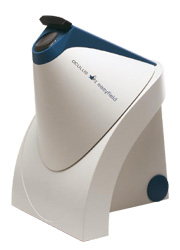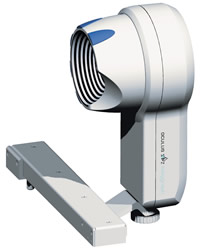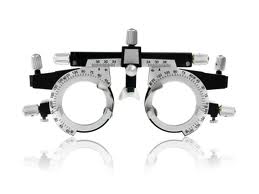Regular eye testing from an optometrist is an important part of maintaining your eye health and ensuring optimum visual performance. Anthony Liska recommends regular eye examinations at least every two years from age four upwards. This is an important part in helping to protect your healthy sight and good vision for the future.
Just like with most health conditions, early detection of eye diseases often minimizes long-term damage, particularly as many eye and vision conditions have no obvious symptoms.
You should follow the advice of your optometrist or ophthalmologist regarding the frequency of eye examinations, as some people need eye examinations more frequently.
Often the optometrist needs to perform quite a few tests in order to assess the overall ocular health and visual performance of the client. It may seem that you only need reading glasses, but the optometrist will still have to determine your distance vision and examine the health of the eyes to complete the eye test.
History:
The optometrist will ask questions about your vision, your occupation and visual needs, your ocular and medical history, and whether you have had previous eye examinations, eye problems, or worn glasses or contact lenses. You will also be asked if any relatives have any conditions which affect vision such as diabetes, hypertension, glaucoma, and if you are taking medication.
Each eye examination is unique and the tests and procedures followed will depend on your needs determined during the examination and during the history. Some of the procedures and examinations commonly performed are:
Visual Acuity
Measurement of the smallest letters you can read on the eye chart. Vision is measured in Snellen notation like 6/6 or 20/20.
Most people can achieve 6/6 (same as 20/20) vision. Some people need glasses to achieve 6/6 vision. Some people have better than 6/6 vision.
One way to understand Snellen notation:
If someone has 6/12 vision, this means that they can see from 6 metres what someone with 6/6 vision can see from 12 metres.
Refraction
Refraction involves determining what optical correction gives optimum vision. It is done in a number of ways ranging from retinoscopy, which involves shining a light into the eyes, to placing lenses in front of the eyes and asking the client to choose which lenses give the best vision. The lens options are changed in a sequence that finishes with the best vision being determined.
Eye Alignment Testing
These tests vary from checking if the eyes are straight and move correctly, to detailed examinations of eye movements. The actual tests performed depend on the requirements of the client.
Anterior Eye Exam
This is an examination of the front of the eye. It is usually done with a slit lamp microscope. The parts of the eye examined are the eyelids, the cornea, the conjunctiva, the tear film, and the lens. Conditions such as cataracts, pterygia, some forms of glaucoma and ingrowing eyelashes are commonly seen in the anterior eye. Another important test on the anterior eye is the pupil examination.
Posterior Eye Exam
Inside the eye at the back is the retina, which is like the film in a camera. Light is projected onto the retina and the retina turns this image into a signal that the brain can process.
There are different ways to look at the retina. The most common way is by using a hand-held lens which is held in front of the eye whilst using the slit lamp. An older technique is to use a direct ophthalmoscope, which is an instrument that is held very close to the eye by the optometrist to allow the retina to be seen. Other techniques include a binocular indirect ophthalmoscope, monocular indirect ophthalmoscope, and a fundus contact lens.
Conditions that can be detected by looking at the posterior eye include: macular degeneration, glaucoma, diabetic retinopathy, retinal detachment, swelling of the optic nerve, and ocular tumours.
Intra-Ocular Pressure
The eye is like a pressurised ball. A fluid called aqueous humour is constantly produced in the eye and it is filtered out of the eye. If the rate of production and filtration is not in balance, then the pressure in the eyes can increase. The nerves in the eye often die if the pressure gets too high. This condition is called glaucoma and can lead to tunnel vision and blindness. There are no symptoms with glaucoma until it is quite advanced. This is why the intra-ocular pressure is measured on everyone over 40 every two years.
Contact Lens Fitting and Aftercare
Contact lenses are a foreign bodies on the eye which can interact with the eye. For his reason it is important the contact lenses are fitted correctly and monitored as advised by the optometrist.


Modern Eye Testing Equipment:
Anthony Liska uses modern eye testing equipment to provide quality eye testing for prescriptions, contact lenses, diabetes, glaucoma and macular degeneration.
A computerised perimeter for visual fields testing. This is useful for screening for glaucoma and for testing for tunnel vision and other visual field defects.
A corneal topographer for mapping the surface of the eye. This is useful for diagnosis of ocular conditions such as keratoconus, fitting rigid contact lenses, and ortho-keratology.
Anthony has equipment for performing binocular indirect ophthalmoscopy and gonioscopy. Eligible clients are bulk billed to Medicare, however, additional fees may be payable for diagnostic imaging or certain procedures. It is expected that most clients who are covered by Medicare will pay $20 out of pocket for their eye examination.

